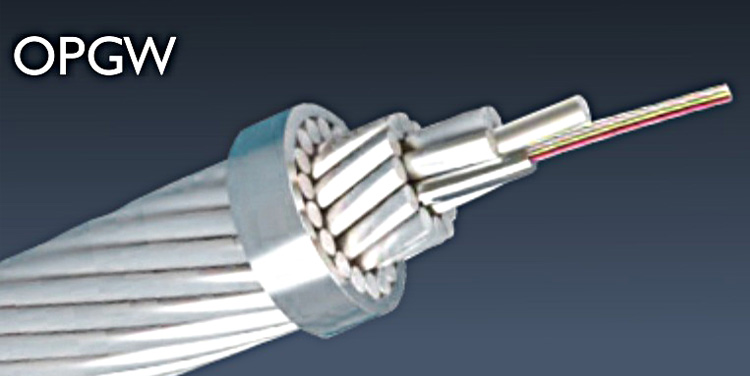?What is the OPGW cable
OPGW cable (Optical Ground Wire) is a kind of cable that is used in the overhead transmission and distribution lines. Generally, the OPGW cables are used in the highest point of the overhead transmission lines’ towers.
The OPGW cables were invented in 1977 and their wide use and installation began in 1980s.
In 2000 about 60000 kilometers of OPGW cables were installed around the world.
The biggest users of OPGW cables are in Asia, specially China which use this cable for the transmission lines.
OPGW cable components
- Steel or aluminum central tube
- Optical Fiber
- Cable sheath that consists of one or more layers of sheath wires
Know more about OPGW cable
OPGW cable consists of one or more aluminum or steel tubes containing a certain number of optical fibers and aluminum-coated steel wires used in the first layer of the cable and in the other layers of aluminum, steel, aluminum alloy wires or a combination of Them, that are used based on the required electrical and mechanical specifications.
The number of optical fibers used in the tubes varies and depending on the need and type of cable, one fiber can be used and reach 12, 24, 48 numbers or even higher.
In the design and production of OPGW cables, single-mode and multi-mode fibers can be used. You can read more about these optical fibers in the article What is optical fiber.
Single-mode fibers are used for distances of more than one kilometer with high bandwidth and Multi-mode fibers are used for distances of less than one kilometer with lower bandwidth.
OPGW cables are similar to ACSR conductors’ appearance or shield wires, and have replaced guard wires in older transmission and distribution lines; In the design of new transmission lines, they are also used as products with both protective and transmitter applications.
OPGW cable applications
This cable is used in transmission and distribution lines for two reasons:
- Protection of phase lines containing electric current (power transmission conductors in overhead lines) against short circuit currents and lightning and lightning currents; consequently, transfer them to the land through transmission towers.
- Transmission of information, audio and video data using optical fibers
Overhead transmission lines are exposed to environment issues like thunder and lightning or storm, etc. so they might face problems.
Due to the high height of the transmission towers, the probability of lightning and thunderstorms hitting them is high, so after the lightning strikes the transmission system, by creating a suitable path for the flow, to prevent problems and disruption of the system.
This is where the importance of OPGW cables comes into play. One of their main applications is to protect the transmission system from environmental factors and earthing instantaneous currents and transmit them to ground through transmission towers.
OPGW cables’ advantages and features
The transmission of optical fibers through overhead transmission towers has many advantages over underground optical fiber cables. For example,
we can mention the much lower cost of overhead installation of each kilometer of these cables compared to underground cables, reduction of damage to the cable due to excavations, the possibility of expanding the routes, etc.
Also, due to the dual purpose of OPGW cable, in addition to protecting phase lines containing electrical current against short circuits and lightning, the power and capability of optical fibers in the transmission of audio and video data can be used in some places where the transmission of optical fiber through underground cables has a high cost (such as mountainous areas, etc.) to reduce the cost of these projects.


No Comments